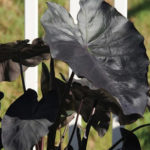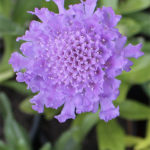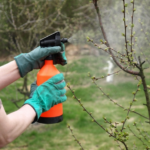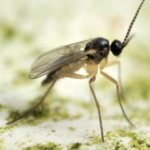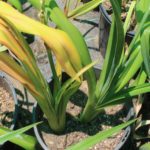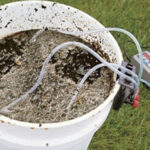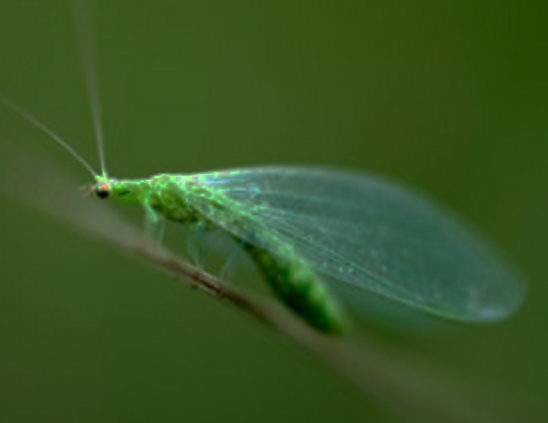
What Are Green Lacewings
Green Lacewing How To Control Pests With Beneficial Insects Naturally
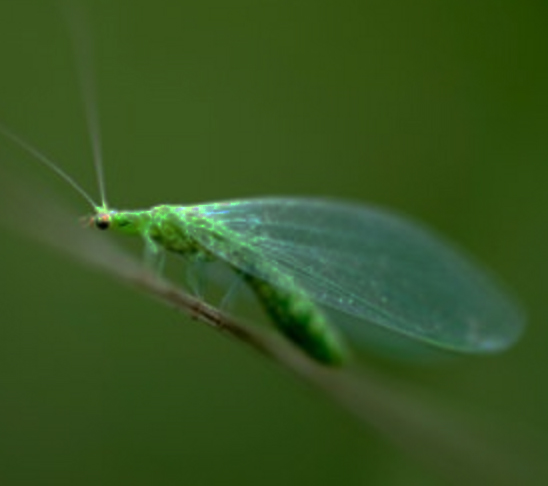 Chrysoperla rufilabris or green lacewing is a beneficial insect widely used by gardeners to control the various insect pests in their garden. The body of the insect is light green in colour and the eyes are golden in colour. The two pairs of wings of the insect are translucent that display some iridescence. Though the adult insects feed on sweet nectar and pollen of flowers mainly, the larvae of the insect feeds on soft-bodied insects and its eggs. These larvae are called aphid lions and consume about 200 aphids within a period of one week. The larvae look like miniature alligators and have flat bodies with a pointed tail and six legs. They are very effective in controlling pests like spider mites, aphids, thrips, mealy bugs, leaf hoppers, white fly as well as scale insects.
Chrysoperla rufilabris or green lacewing is a beneficial insect widely used by gardeners to control the various insect pests in their garden. The body of the insect is light green in colour and the eyes are golden in colour. The two pairs of wings of the insect are translucent that display some iridescence. Though the adult insects feed on sweet nectar and pollen of flowers mainly, the larvae of the insect feeds on soft-bodied insects and its eggs. These larvae are called aphid lions and consume about 200 aphids within a period of one week. The larvae look like miniature alligators and have flat bodies with a pointed tail and six legs. They are very effective in controlling pests like spider mites, aphids, thrips, mealy bugs, leaf hoppers, white fly as well as scale insects.
Green Lacewing Life Cycle
The adult lacewing lays about 200 eggs on the foliage and the eggs are attached to the underside of leaves through a slender egg stalk. After hatching, the larvae move to the leaves through the stalk. The larvae have large sucking jaws to attack insects like aphids. After a period of voracious feeding on insects, insect larvae and eggs, the lacewing larvae start to pupate by spinning a cocoon around it. After 5 days, the adult lacewings emerge from the cocoon and they mate and repeat the life cycle. An adult lacewing can live for about 4-6 weeks depending on the climate of the area. Green lacewing adults can withstand a mild winter; however, the insects cannot tolerate cold winters.
Will Green Lacewings Bite?
Though green lacewing has strong mandibles which are long and curved, they do not bite humans. They do not harm humans but use their powerful mandibles to kill the insects. Even if the lacewings bite humans accidentally there is no need for any treatment. Rather than causing any danger they can be a nuisance when working in the garden as they can give you ant like bite when provoked.
Using Lacewings For Insect Control
Green lacewings can be used for insect control or pest management in the garden and greenhouses. Using pesticides may keep away the lacewings from your garden. You can use lacewings to protect your crops and ornamental plants. To control the insects you can release lacewing larvae and eggs in the garden. Lacewing eggs are available online from many suppliers. They come in vials along with the food and carrier. You can release the newly emerged larvae into your garden as soon as the larvae start to emerge. The best time to release the larvae are early morning or in the evening. The adults are also sold by online stores. It is necessary to provide proper food and habitat to keep the adults in your garden. If the food sources like nectar, honeydew and pollen are not available the adults will leave your garden in search of food availability and they will lay the eggs elsewhere. You need to use at least 10 lacewing eggs or larvae for a single plant. For a 200 square feet area, you need to use 1000 eggs.





